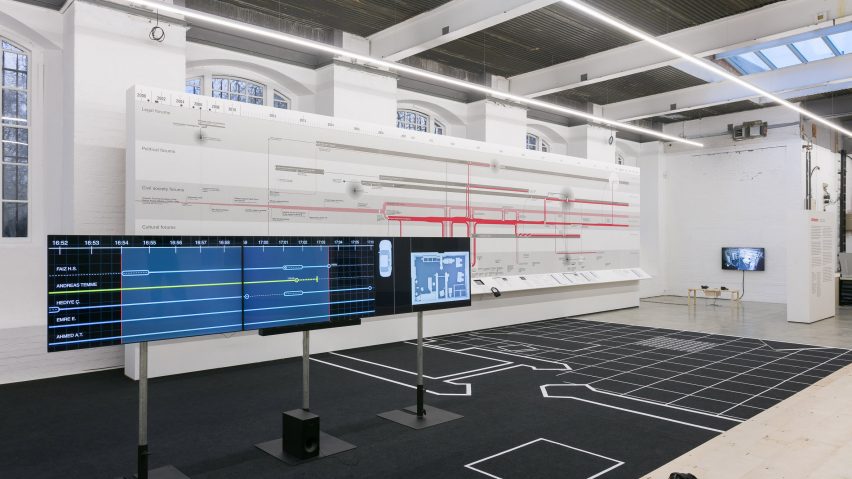
Counter Investigations exhibition by Forensic Architecture wins Design of the Year 2018
Research agency Forensic Architecture has won the Design of the Year award for 2018, beating fashion designer Erdem Moralioğlu's Royal Ballet costumes and Space X's Falcon Heavy rocket.
Forensic Architecture won the Beazley Design of the Year award, organised by London's Design Museum, for its Counter Investigations exhibition at the Institute of Contemporary Art (ICA) earlier this year.
The win caused Ian Callum, design director of Jaguar and one of the six judges, to declare that "the era of multi-discipline design has really has commenced".
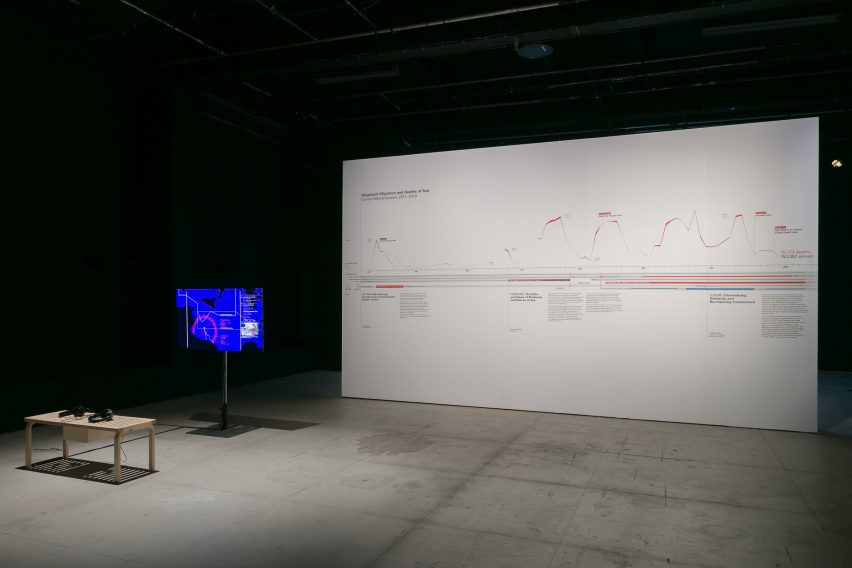
The research agency is based at Goldsmiths University in London, from where it uses a range of research techniques to expose miscarriages of justice by piecing together strands of evidence across various disciplines.
Its work uses footage from news coverage, videos shot on smartphones, satellite images, as well as maps and fragments of other evidence are subject to architectural analysis. From these many strands of data, Forensic Architecture creates detailed 3D reconstructions, to identify a clear picture of events in cases where information is disputed.
The exhibition for which they won the award included investigations into a murder in Kassel, Germany by a member of a far-right group, and the failings of state agencies that contributed to the deaths of migrants in the Mediterranean.
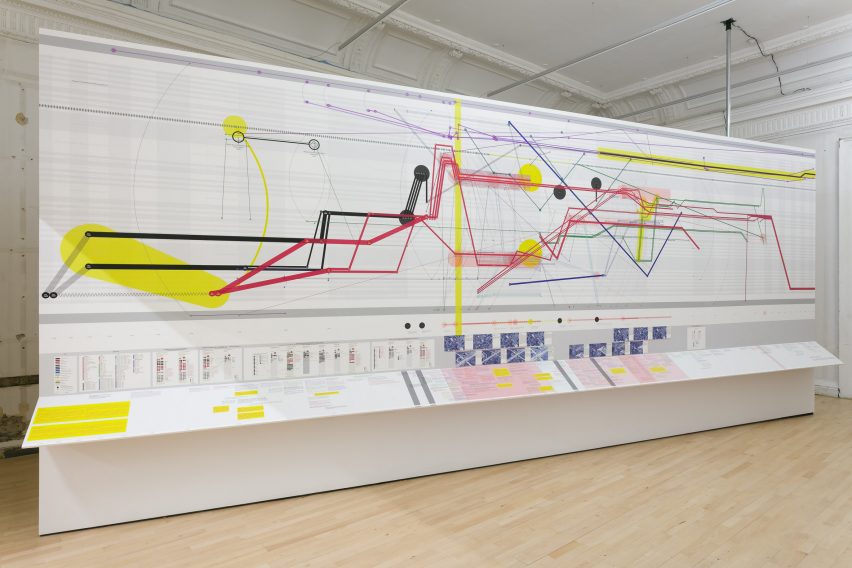
Robert Devereux, chairman of London member's club The Conduit, and a judge of the awards, described the presentation at the ICA as "stimulating, engaging and accessible" and praised the impact on society that this and the other nominated projects have had.
"Forensic Architecture has invented a new paradigm in the search for the truth," said Devereux. "Its application of architectural skills to the re-creation of past events is extraordinarily innovative, intellectually rigorous and will make a significant contribution to justice."

The jury was chaired by Paul Priestman of Priestman Goode, and other members included designer Tord Boontje, fashion designer Roksanda Ilinčić, and Melodie Leung, senior associate at Zaha Hadid Architects.
Leung recognised that "the persistent and creative use of existing data and tools, applied in an open and collaborative manner, can be an effective way to challenge existing narratives and power structures in the pursuit for truth and justice."
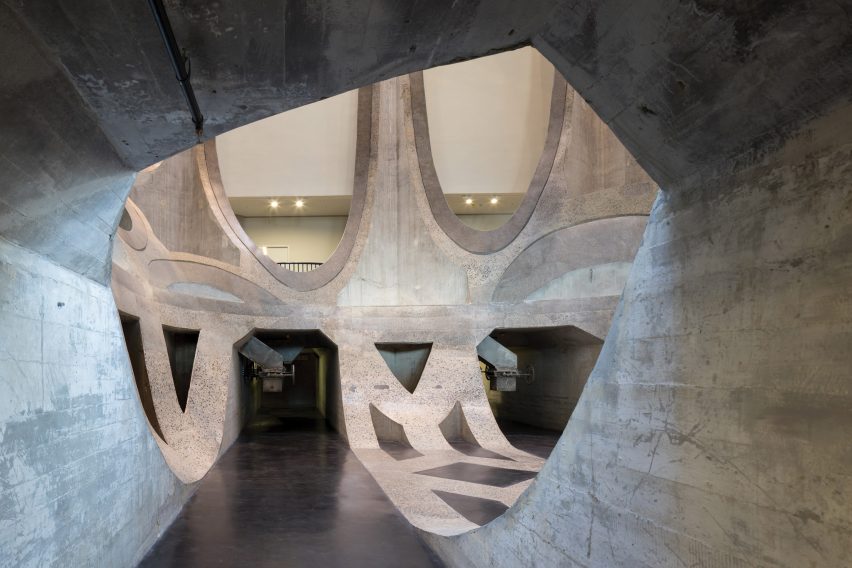
As well as the overall prize, winners were announced in each of the six categories, architecture, fashion, graphics, product and transport. Forensic Architecture were the winners of the digital category.
Thomas Heatherwick's design for the Zeitz Museum of Contemporary Art Africa won the architecture category. The London-based design studio carved a skylit atrium from within 42 concrete former grain silos in Cape Town to create a gallery space.
Erdem Moralioğlu was awarded the best design in the fashion category for his 24 costumes with ethereal sheer tutus for Christopher Wheeldon's production of Corybantic Games, which saw him swap the catwalk for the Royal Opera House stage.
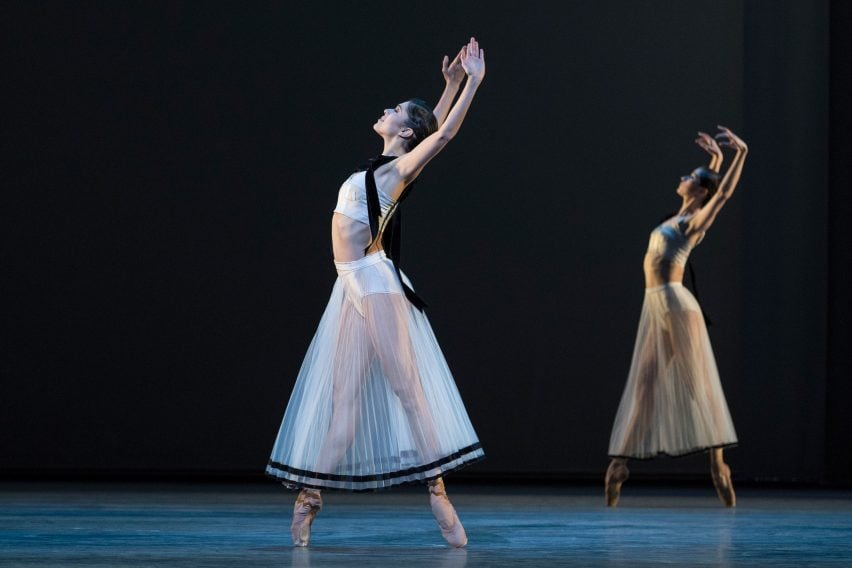
In the graphics category, a campaign to declare the Great Pacific Garbage Patch a country designed by the Plastics Ocean Foundation with online publisher LADbible took the top prize.
The product design award went to Paperfuge, a low-tech medical testing device that uses a hand-powered centrifuge to separate plasma from blood, by Prakash Lab.
At the opposite end of the scale, the transport category saw Elon Musk's Space X programme awarded for Falcon Heavy, the world's most powerful rocket, which was successfully launched for the first time in February this year.

Earlier this year Forensic Architecture expressed "mixed feelings" about their nomination for the Turner Prize, the art world's highest accolade, but were "delighted" to win the Design of the Year at a ceremony at the Design Museum on 15 November.
Eyal Weizman, of Forensic Architecture described their win as "incomprehensible" and "the most unexpected thing" to the assembled guests at the ceremony. "Given what we do, the support we need – this win is very important for us," he said.
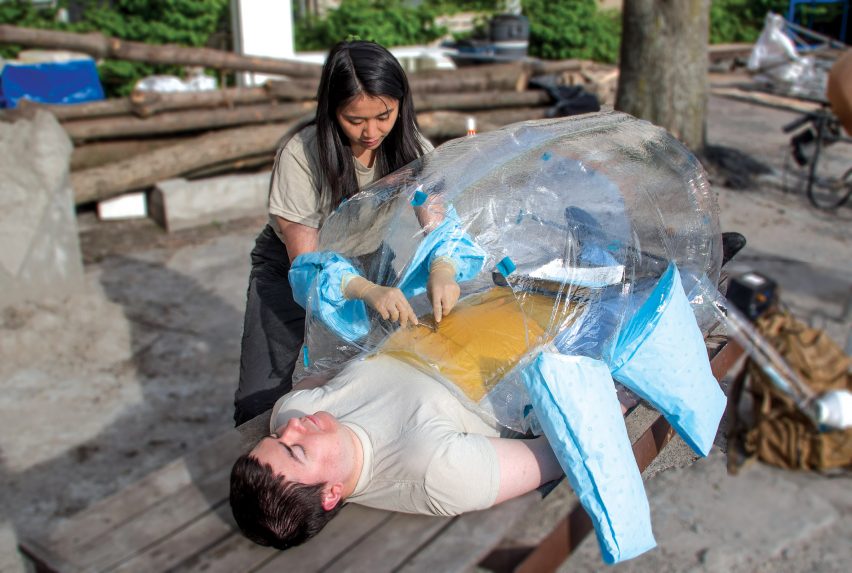
The winner of the people's choice award, as voted for by visitors to the exhibition was won by SurgiBox, a mobile operating theatre that fits into a backpack. The six category winners are on display at the Design Museum in London until 6 January 2019, along with the work of the 81 other nominees.
Architect David Adjaye's Smithsonian National Museum of African American History and Culture in Washington D.C. won last year's prize, and previous winners have included the Olympic torch by Ed Barber and Jay Osgerby, and the UK government website by GDS.